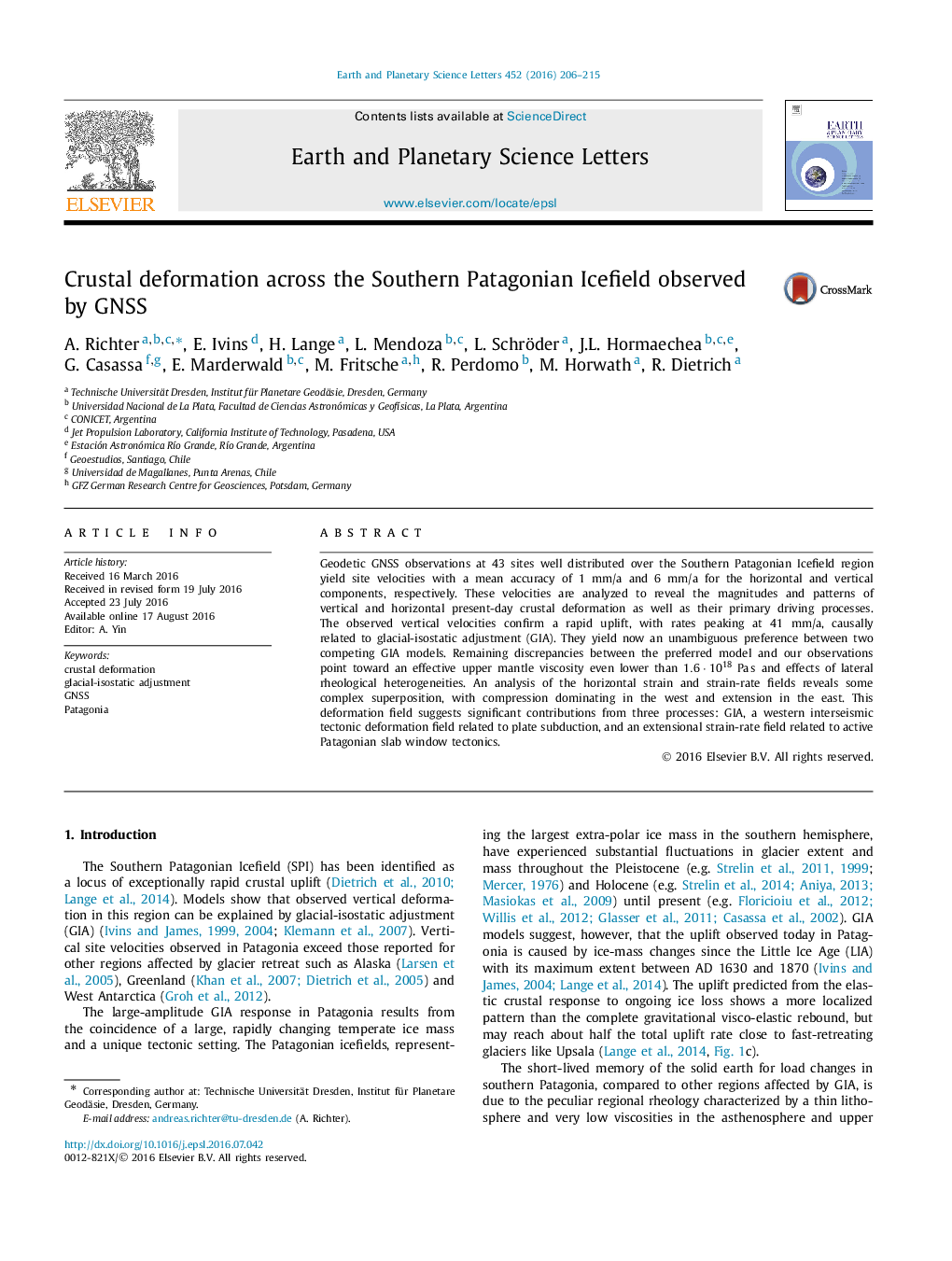| Article ID | Journal | Published Year | Pages | File Type |
|---|---|---|---|---|
| 6427119 | Earth and Planetary Science Letters | 2016 | 10 Pages |
â¢Crustal deformation at the Southern Patagonian Icefield observed at 43 GNSS sites.â¢Glacial-isostatic adjustment generates crustal uplift of up to 4 cm per year.â¢Plate collision and the Patagonian slab window contribute also to horizontal strain.
Geodetic GNSS observations at 43 sites well distributed over the Southern Patagonian Icefield region yield site velocities with a mean accuracy of 1 mm/a and 6 mm/a for the horizontal and vertical components, respectively. These velocities are analyzed to reveal the magnitudes and patterns of vertical and horizontal present-day crustal deformation as well as their primary driving processes. The observed vertical velocities confirm a rapid uplift, with rates peaking at 41 mm/a, causally related to glacial-isostatic adjustment (GIA). They yield now an unambiguous preference between two competing GIA models. Remaining discrepancies between the preferred model and our observations point toward an effective upper mantle viscosity even lower than 1.6â 1018Â Pas and effects of lateral rheological heterogeneities. An analysis of the horizontal strain and strain-rate fields reveals some complex superposition, with compression dominating in the west and extension in the east. This deformation field suggests significant contributions from three processes: GIA, a western interseismic tectonic deformation field related to plate subduction, and an extensional strain-rate field related to active Patagonian slab window tectonics.
